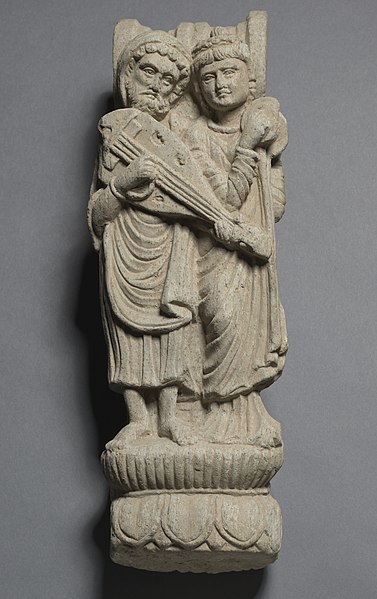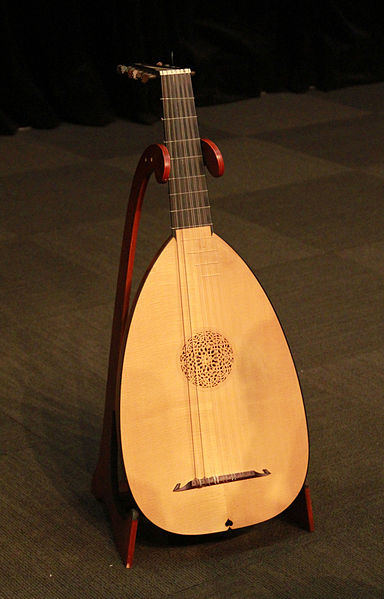The barbat or barbud is a lute of Greater Iranian or Persian origin, and widespread across Central Asia, especially since the Sassanid Empire. Barbat is characterized as carved from a single piece of wood, including the neck and a wooden sound board. Possibly a skin-topped instrument for part of its history, it is ancestral to the wood-topped oud and biwa and the skin-topped Yemeni qanbus.
"Siddhartha" playing a lute-type instrument. Gandaran art. Date not given for artwork. The era for grey schist art was 1st-6th centuries A.D.
The lute-type instrument from a decorated dish, Sasanian Iran (7th-8th centuries A.D.) was pointed out by Michael Nixon as a possible barbat.
Clay figurine from Kingdom of Khotan, c. 1st-6th centuries A.D., very early image of short necked lute. Has also been called rebab (a skin-topped instrument).
Cleveland Museum of Art, Lute in Pakistan, Gandhara, probably Butkara in Swat, Kushan Period (1st century-320)
A lute is any plucked string instrument with a neck and a deep round back enclosing a hollow cavity, usually with a sound hole or opening in the body. It may be either fretted or unfretted.
Renaissance lute in 2013
Ancient Egyptian tomb painting depicting players with long-necked lutes, 18th Dynasty (c. 1350 BC).
Hellenistic banquet scene from 1st century A.D., Hadda, Gandhara. Lute player with short-necked lute, far right.
Lute in Pakistan, Gandhara, probably Butkara in Swat, Kushan Period (1st century-320)







